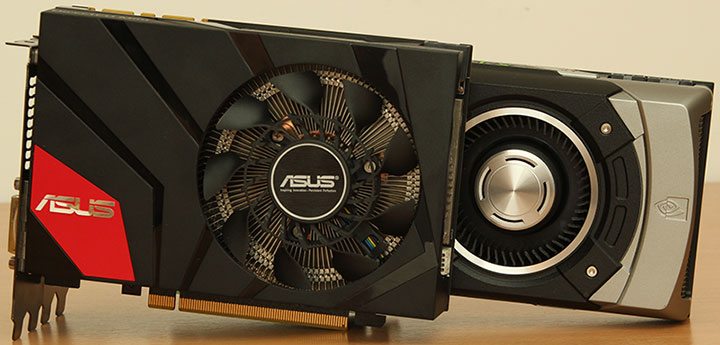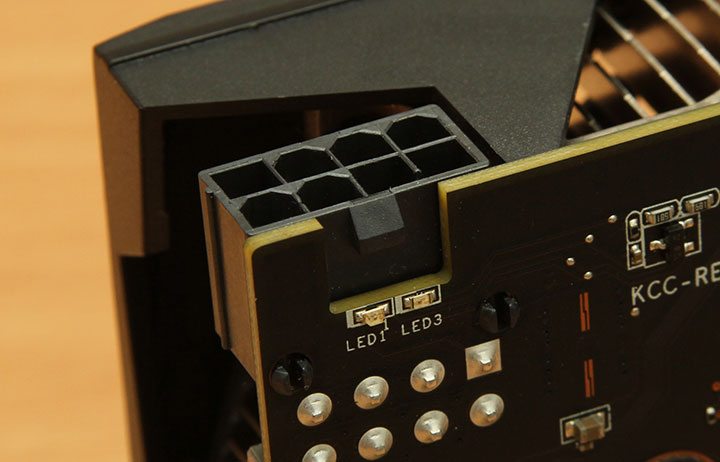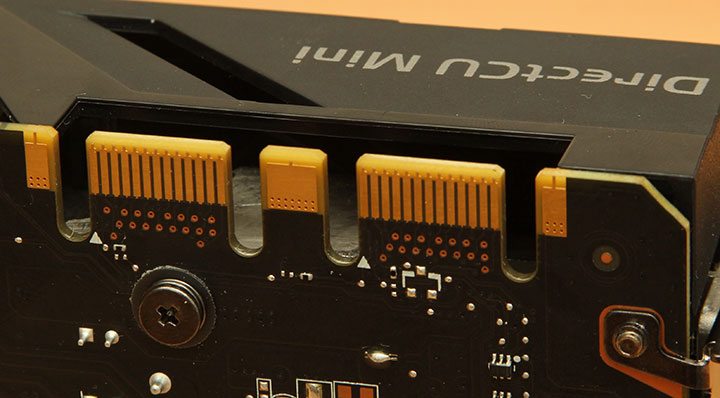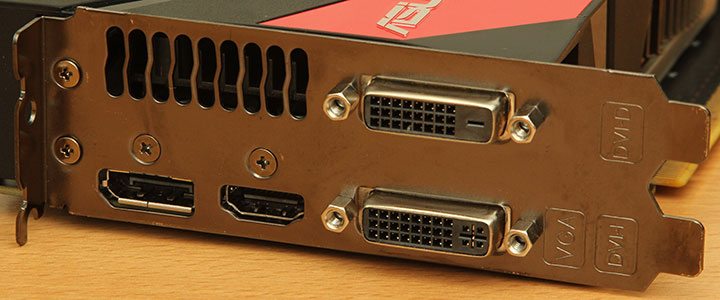Asus GTX 670 DirectCU Mini 2GB Graphics Card Review
Chris Hadley / 12 years ago
In a change to the traditional DirectCU cooler design that Asus typically use, the GTX 670 Mini sees a completely redesigned cooling solution featuring a new fan design and smaller heat-sink whilst still holing on to the top end graphics performance that NVIDIA pack into the GK104 Kepler core.

Lining the 670 Mini up along one of the the longest cards that I have for comparison; Titan, it’s easier to get a feel for how compact this card truly is.

The major part of the redesign to the DirectCU cooler is all based around the CoolTech fan. As mentioned before, Asus have taken two different fan designs and combined them in to a single unit. This gives the CoolTech fan the best of both worlds and as the video shows on the front page it really does work. Considering the smaller heat sink the lies underneath this extra cooling performance from the fan is crucial for keeping things cool under the collar. How this all stems out though when it comes to overclocking is one that I’m still on the fence about at this moment.

A reference design GTX 670 uses two 6-pin power connectors and typically we see any other 670 using the same connections. Asus however have reduced the power needed and thus instead a single 8-pin power connector is required. As seen more and more on Asus cards, the power connector is reversed to make removal easier later on and below are two LEDs the change from red when the cable is not connected properly to green once it is. This may seem like a trivial thing to put on the board, but there are numerous occasions where a lose connection causes cards not to power up correctly.

Whilst the 670 Mini is physically smaller, there is still the same amount of flexibility given for SLI set-ups with up to four way SLI possible.

The number of new features continues as the card is turned over to look at the back of the PCB. Standing out on the black board is a metal bridge that sits directly behind the GPU core. This is where the 670 mini really starts to deviate from the reference design. This simple bridge over the back of the GPU core lies above the SAP CAP which maximises the overclocking headroom and its function is to reduce the PCB temperature by around 15% which, when overclocking, plays a major role in the stability of the GK104 core.

Spinning the card around, its no surprise that we find a standard array of display outputs on offer.

This may be a compact card with a smaller cooler and shiny new fan design, but its not down on power by any means. As seen on the front of the box, this is not only a mini card, but it has also been given the overclock treatment as well. Whilst leaving the memory at the reference speed of 1502MHz (6008MHz effective), Asus have raised the core clock speed to 928MHz, up 13MHz from the reference 915MHz, but this also means that the boost clock has gone up by 26MHz, pushing it past the 1GHz barrier. Considering Asus have opted to use a heap of new components to regulate the voltage and power delivery, including a non-reference voltage regulator, it is going to be interesting to see how well this card can overclock given its smaller cooler design.




















